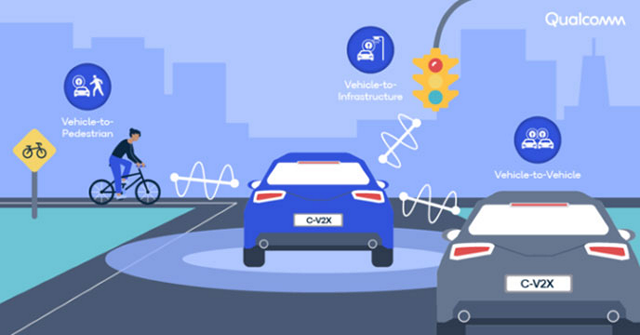The Rise of E-Bikes and Their Impact on the Cycling Industry

In recent years, the cycling industry has witnessed a significant transformation with the rise of e-bikes. These electrically powered bicycles have revolutionized the way people commute, explore, and experience cycling. As e-bikes continue to gain popularity, their impact on the cycling industry is undeniable - shaping trends, redefining mobility, and opening up new possibilities for riders of all backgrounds. Let's delve into the rise of e-bikes and explore their pros and cons on the cycling landscape.
Growth of E-Bikes
We are, without a doubt, in the midst of an e-bike boom. Every sporting brand adjacent to cycling has an ebike. It's virtually impossible to read about industry news without e-bikes being mentioned or referenced in some capacity whether it is good or bad news. According to Vantage Market Research, the global e-bike market is projected to grow from $53 billion to $112 billion and have a Compound Annual Growth rate of 9.7% from 2022 to 2030. That's huge!
In the past 10 years there have been major strides in advancing e-bike technology with better motors, longer lasting batteries, and more power. The ideal is that people ditch their cars and use their e-bikes to get around to do day-to-day tasks. Thus alleviating congestion, making people more attuned with the outdoors, and ultimately healthier. This all sounds awesome. And don't get me wrong, I am generally in favor of e-bikes. I think their introduction into the mainstream can be seen as a positive in a lot of ways.
How Riders Use E-Bikes

photo courtesy of www.cyclingelectric.com
Adrian had an e-bike when she commuted into DC for work. It was an awesome alternative to waiting at the Metro and walking (this was before bikes were allowed on the trains during work hours).
I've seen couples on the trail riding happily together while one partner was on an aero road bike and the other on an e-bike. I've read stories of people doing tours over mountains - many of whom admit they wouldn't have been able to do it on (I'll say it for the sake of this article) analog bikes. And I've seen people who found that their e-bike allowed them to begin cycling after life-changing events.
Going to cities, you see tons of delivery drivers with food containers, large packages, tubes of documents, and anything and everything that can fit on a bike. Fewer cars making back and forth trips in already congested areas makes sense.
Technologically Speaking
Well, not all e-bikes are created equally. There is an enormous range of quality, safety, and compatibility. The quality and safety issues are the main drivers of legislation and change within the US and our industry. There are numerous reports of fires that cause death, injuries, and millions of dollars of damages with the prime culprit being poorly constructed e-bikes. New York City alone saw more than 200 fires caused by e-bikes, e-scooters, and similar products.
There's obviously a need for something to be done with regards to safety. There are already many regulations going through the US Government to regulate how e-bikes are made, what components are used, and how they are transported. This is an important step in an otherwise pure money-grab from many actors who don't care about safety. This is an important step that will save lives.
A step e-bike manufacturers need to take is to make their bike sustainable for the long term. An (insert sigh here) analog bike could last indefinitely with regular maintenance. Forget friction vs indexing or disc brakes vs rim brakes - that isn't important in the long term. The life-cycle of this type of bike is decades for all intents and purposes. Steel and aluminum frames can be recycled unlike carbon, but I digress.
Adrian's e-bike is a Trek Valencia+ with a Bionx system. It was really nice and served her well - 3x10 Deore components, integrated lighting, nice rear rack, flat bars. That is, until the battery and controller died and Bionx closed their doors with OEM parts no longer available. Keep in mind even if I could find something, it will still be quite old (in tech years) at this point with an unknown service history. And now, it sits in our garage waiting for a conversion to analog because what else can you do?
This story is not unique. I've heard numerous anecdotes of someone's bike breaking and the are no replacement parts to be had. Some bikes are so integrated with the battery, motor, and controller that it is not reasonable to even change it to another system and the brand can't warranty it because it is no longer supported. As e-bikes age, they are quickly turning to electronic waste destined for the scrap yard along with old laptops, tube monitors, and old cell phones. That is something the industry needs to be prepared for. I hope there is regulation that will require companies to support these products for a reasonable period of time.
We Can't Tech Ourselves Out of Bad Infrastructure
There is some really good news about federal funding for bicycle and pedestrian infrastructure! From the People for Bikes news website (whole article can be read here):
"...at least $50 billion in funding is available for communities to plan and implement new infrastructure over the next five years through a combination of competitive and formula grants. Although all of that money won’t go to bikes, nearly $13 billion could realistically accelerate the planning and construction of biking and walking projects across the country, dramatically expanding access to safe infrastructure for millions of Americans."
As much as I would love to have huge bicycle highway projects funded and implemented, the reality is that sort of thing is slow and gets held up through bureaucracy and public vs private land lawsuits, etc.. The fact of the matter is that we need to get that low hanging fruit.
We all know those trails that are fantastic, but are disjointed. Building simple and safe connectors between those trails will increase ridership and usability. Guaranteed.

We're lucky on the East Coast that we have so many old rail lines. Our Baltimore and Annapolis (B&A) Trail was an old rail line that was both for freight and passengers through the late 1800s into the mid 1900s. In the 70s after a trestle was washed away, the process to convert it into a trail began. Eventually, it will be part of the East Coast Greenway. So you could ride from Florida to Maine all off-road!
As far as traveling in the city, this increased spending budget will help identify where pinch points are and help keep riders safe. And look - as much as I want to believe automobiles and bicycles/pedestrians can live in peace in urban environments, our cities have been developed and re-developed to accommodate cars and not people. The best thing is to build mixed use trails and separated (and protected!) bike lanes. Sharrows and green painted bike lanes don't work as well. If a car can pull into the lane at any moment, it's a failure.
I heard one representative from a tech company at the Bicycle Leadership Conference talk about how they are developing a city and system that can communicate between cars, bikes, and streets. Basically, your bike would be fitted with this system and would ping your location between street posts and cars. If you are too close to a car, the driver of the vehicle would be alerted that there is a bike nearby. But you need to have a brand new Audi. No joke. We can't tech our way out of bad infrastructure and inattentive drivers.
photo courtesy of Qualcomm
The pure answer is that we need low-tech, sustainable infrastructure, that can be copy and pasted into other places. This is how an infrastructure plan can flourish.
The Wrap-Up
The rise of e-bikes has brought about a transformative shift in the cycling industry. With their expanded accessibility, enhanced commuting capabilities, generally positive health effects, and influence on urban infrastructure, e-bikes have become a new and growing segment of our industry. There absolutely needs to be tighter regulation on manufacturing and importation. As e-bikes continue to evolve for the better, their impact on our lives will continue to grow, shaping the way we perceive and experience cycling in the years to come.







I’ve been riding bicycles my whole life and think the ebike revolution of a positive thing for many people. I prefer an “analog” bike because my main purpose is fitness. There are those that suggest we tax and license ebikes….BAD Idea. Government has proven its inability to make use of the money it already takes from us and apply it to the purpose for which it was taken in the first place! Government intervention is NOT the answer.
E-bikes have great potential to be short-haul replacements for cars. But in 95% of cases, they’re really impractical to ride without electricity. At 60 pounds or more, they’re 30 pounds heavier than each of my geared bikes, and 40 pounds more than my fixed-gear bike. That’s not something I want to pedal up a hill, and it’s not particularly responsive handling rolling over the singletrack at my local park. The closest comparison is more a moped than a human-powered bicycle. Our infrastructure doesn’t support mopeds particularly well, either. At least you can wheel an electric bike into the office with you, fold it up, and park it by your desk. Try that with a moped :-)
As for sidewalks and bike paths, many already have rules banning motorized vehicles. Those rules aren’t enforced at all, however. I’m not sure how we go about doing that, but a start might be to license and tax e-bikes like we do mopeds and motorcycles.
I recently rode a 26.2 mile charity ride on my analog bicycle. It was challenging and hard for me. Adding insult to injury, I was passed by numerous unabashed geezers, and young’uns on e-bikes. The young’uns were actually playing with their phones when they blew by me. I’m a card carrying geezer myself and I am looking to ‘upgrade’ as necessary to keep up.
E bikes have made cycling accessible to many individuals who might not be able to enjoy the sport ??
At 28 mph, ebikes are larger and heavier than any standard bike on the road. They are NOT bicycles and belong on the road, in lane with cars. They do not belong in parks or bike lanes.
The percentage of people who can properly and safely handle an ebike at 24-25 mph on bike paths, parks and bridges is …. ZERO.
The electronic vehicle community has completely destroyed the cycling experience where I live.
PL/NYC
In france and italy, we have some interesting low tech e-bikes available (cavale in France and Capri in Italy). These are traditionally made bicycles with added small hub motors and simple battery to be fixed on the frame. These bikes are essentially traditional cycles designed for being electrified. Motors and battery are not an afterthought. And one can swap the rear wheel, remove the battery and still have a nice bicycle to use.
Leave a comment